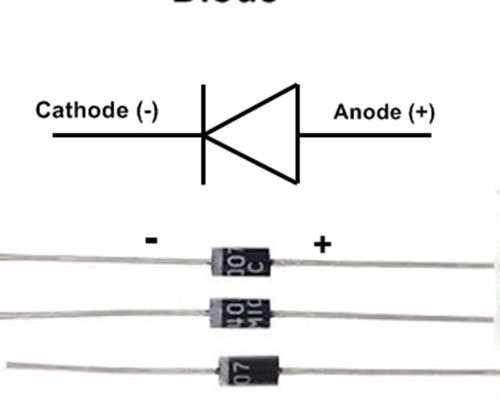Category: Education
Jul 20, 2023 Education
Degrees of Deceit – The Tactics of Fake Diploma Providers
In a world driven by credentials and qualifications, the rise of fake diploma providers has become a concerning epidemic. As the demand for higher education and specialized skills grows, so does the temptation to take shortcuts in acquiring academic recognition. These deceitful entities operate in the shadows, preying on the aspirations and vulnerabilities of individuals seeking a fast track to success. Through the allure of convenience and instant gratification, they offer counterfeit diplomas, degrees, and certificates from reputed institutions, all while disguising their fraudulent practices with cunning tactics. One of the primary techniques used by these fake diploma providers is the creation of websites that imitate legitimate universities and colleges. With sophisticated designs and misleading domain names, these virtual traps lure unsuspecting applicants into their web of deception. They masquerade as fully accredited institutions, complete with false testimonials and fabricated success stories, cleverly exploiting the human desire for social validation and recognition.
Moreover, fake diploma providers exploit legal loopholes and jurisdictional complexities to stay one step ahead of the law. They operate from obscure locations, often crossing international borders to evade legal repercussions. The absence of global coordination and regulatory standards makes it challenging to prosecute these fraudulent operations effectively. Thus, they continue to thrive, profiting from the dreams of individuals while eroding the credibility of genuine academic achievements. The proliferation of fake diploma providers not only undermines the integrity of education but also jeopardizes public trust in academic qualifications. Employers, academic institutions, and professional bodies increasingly face the daunting task of verifying credentials in a landscape tainted by fraudulent certificates. The consequences of hiring individuals with fake diplomas can be severe, leading to compromised workplace standards, potential legal liabilities, and reputational damage.
 To combat this pervasive issue, a collaborative effort among governments, educational institutions, online platforms is paramount visit the https://lambang-toanquoc.org/. Strengthening international cooperation to track and dismantle fake diploma networks, implementing stringent verification processes, and raising awareness among the public about the dangers of counterfeit qualifications are essential steps towards safeguarding the integrity of education. Ultimately, the battle against fake diploma providers requires a multi-faceted approach that embraces technology, regulation, and education. By unmasking their deceptive tactics and exposing their true nature, we can reclaim the value of genuine education and ensure that academic accomplishments are earned through dedication, hard work, and intellectual growth. Together, let us stand against the degrees of deceit, fostering a world where knowledge is honored and the pursuit of excellence is upheld with integrity.
To combat this pervasive issue, a collaborative effort among governments, educational institutions, online platforms is paramount visit the https://lambang-toanquoc.org/. Strengthening international cooperation to track and dismantle fake diploma networks, implementing stringent verification processes, and raising awareness among the public about the dangers of counterfeit qualifications are essential steps towards safeguarding the integrity of education. Ultimately, the battle against fake diploma providers requires a multi-faceted approach that embraces technology, regulation, and education. By unmasking their deceptive tactics and exposing their true nature, we can reclaim the value of genuine education and ensure that academic accomplishments are earned through dedication, hard work, and intellectual growth. Together, let us stand against the degrees of deceit, fostering a world where knowledge is honored and the pursuit of excellence is upheld with integrity.
Mar 13, 2023 Education
Things to be aware of Diodes and its purpose
Diodes come in many shapes and sizes. High-current diodes are in many cases mounted on an intensity sink gadget to diminish their working temperature. It is feasible to put diodes in lined up with increment the current-conveying limit, however the VI qualities of the two diodes should be firmly matched to guarantee that ongoing partitions equitably (albeit a little resistor can be set in series with every diode to assist with balancing the flows). All diodes have some spillage current (current that overcomes when a diode is opposite one-sided). This spillage current-also called the converse current (IR) – is tiny, commonly inside the Nano ampere range. Diodes likewise have a most extreme reasonable opposite voltage, top converse voltage (PRV), or top reverse voltage (PIV), above which an enormous current will stream off course.
 In the event that the PIV is surpassed, the diode might get destroyed and may turn out to be for all time harmed. The PIV for diodes differs from a couple of volts to as much as a few thousand volts. One technique for accomplishing an actually higher PIV is to put diodes in series. Once more, it is vital that diodes are matched to guarantee that the converse voltage partitions similarly (albeit a little resistor put in lined up with every diode can be utilized to balance the opposite voltages). Different interesting points about diodes incorporate greatest forward current (IF), capacitance (framed across the pn intersection), and converse recuperation time. Most diodes have a 1-prefix assignment (e.g., 1N4003). The two closures of a photodiode array detector are normally recognized from one another by an imprint. For glass-embodied diodes, the cathode is assigned with a dark band, while dark plastic typified diodes utilize a white band.
In the event that the PIV is surpassed, the diode might get destroyed and may turn out to be for all time harmed. The PIV for diodes differs from a couple of volts to as much as a few thousand volts. One technique for accomplishing an actually higher PIV is to put diodes in series. Once more, it is vital that diodes are matched to guarantee that the converse voltage partitions similarly (albeit a little resistor put in lined up with every diode can be utilized to balance the opposite voltages). Different interesting points about diodes incorporate greatest forward current (IF), capacitance (framed across the pn intersection), and converse recuperation time. Most diodes have a 1-prefix assignment (e.g., 1N4003). The two closures of a photodiode array detector are normally recognized from one another by an imprint. For glass-embodied diodes, the cathode is assigned with a dark band, while dark plastic typified diodes utilize a white band.
On the off chance that no images are available (as seen with many power diodes), the cathode might be a bolt like piece. This piece is embedded through an intensity sink gadget (piece of metal with an opening) and is secured somewhere near a nut. A fiber or mica washer is utilized to confine the cathode electrically from the metal intensity sink, and unique silicone oil is put between the washer and intensity sink to improve warm conductivity. A zener diode is a gadget that goes about as a commonplace pn-intersection diode with regards to advance biasing, yet it likewise can lead in the converse one-sided course when a particular breakdown voltage (VB) is reached. Zener diodes commonly have breakdown voltages in the scope of a couple of volts to two or three hundred volts albeit bigger viable breakdown voltages can be reached by setting zener diodes in series.